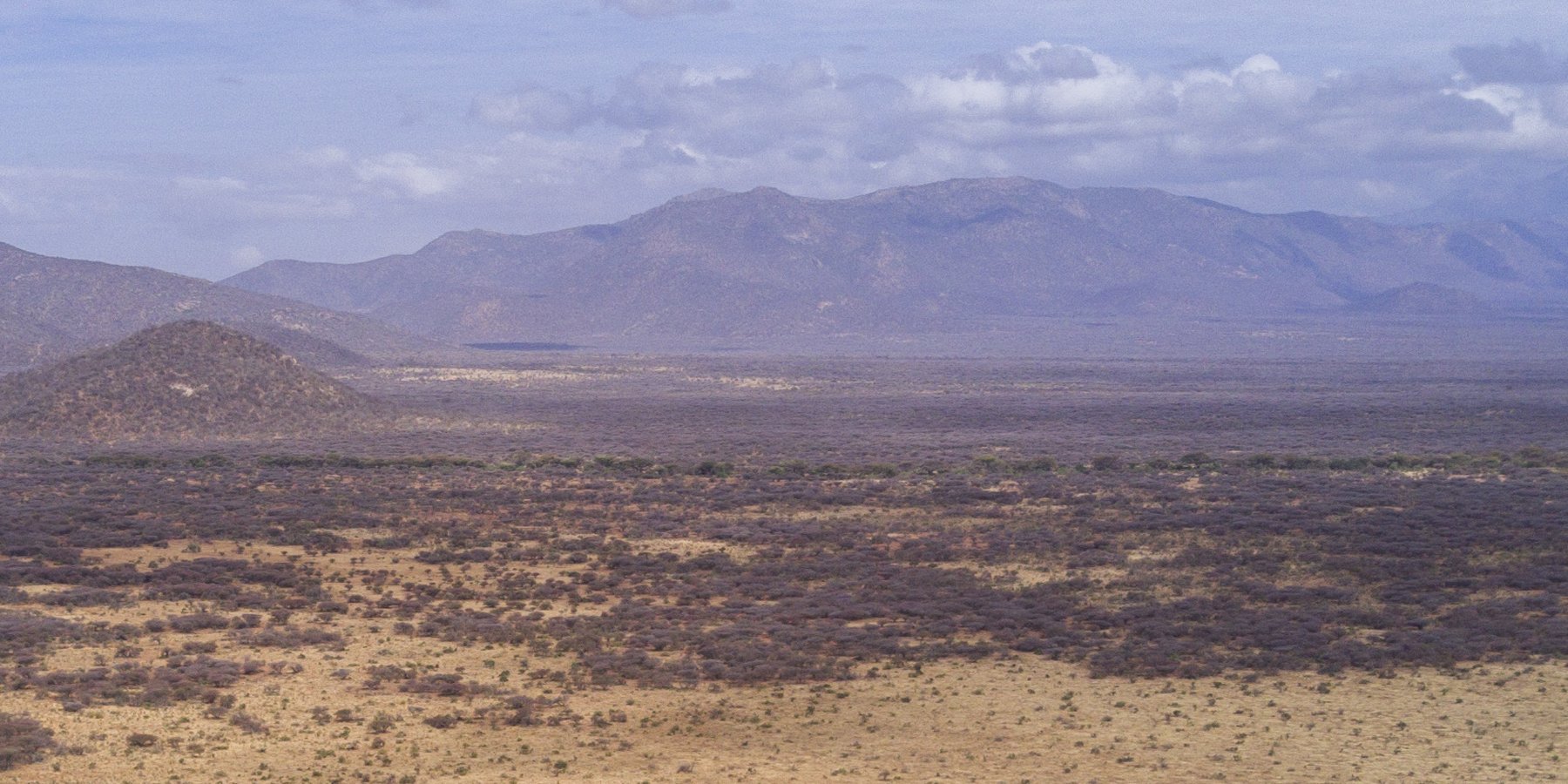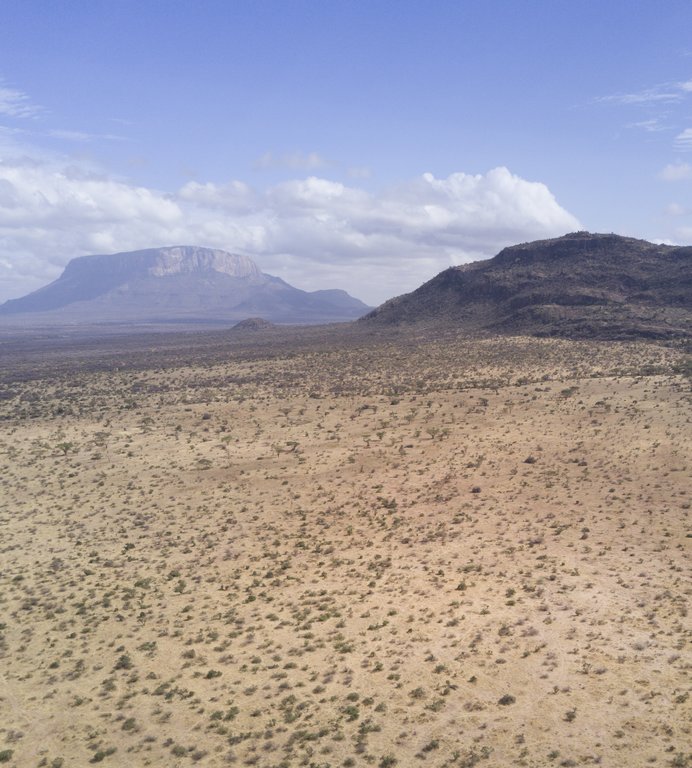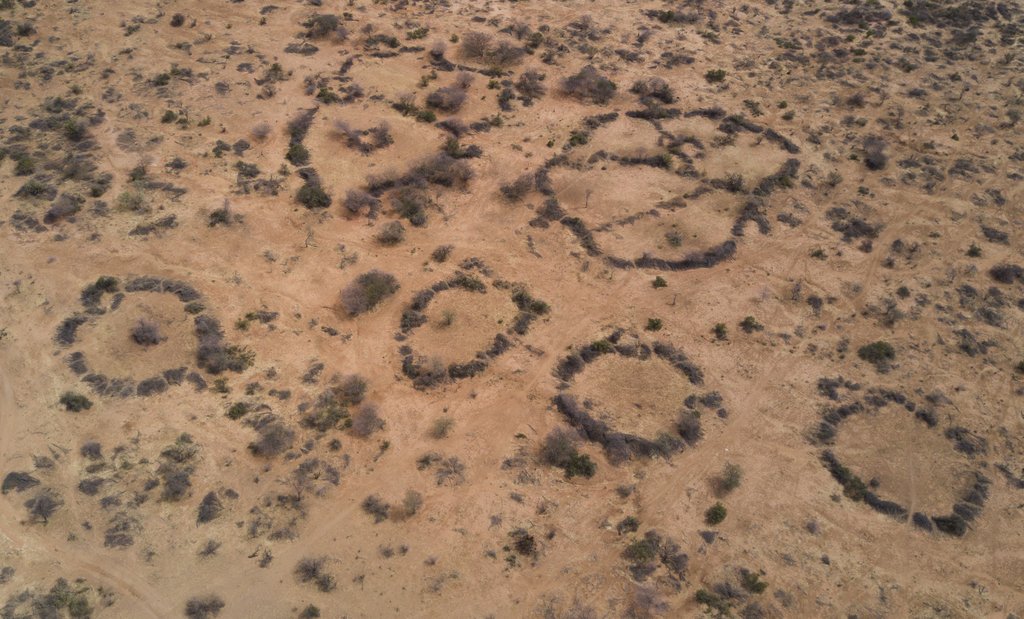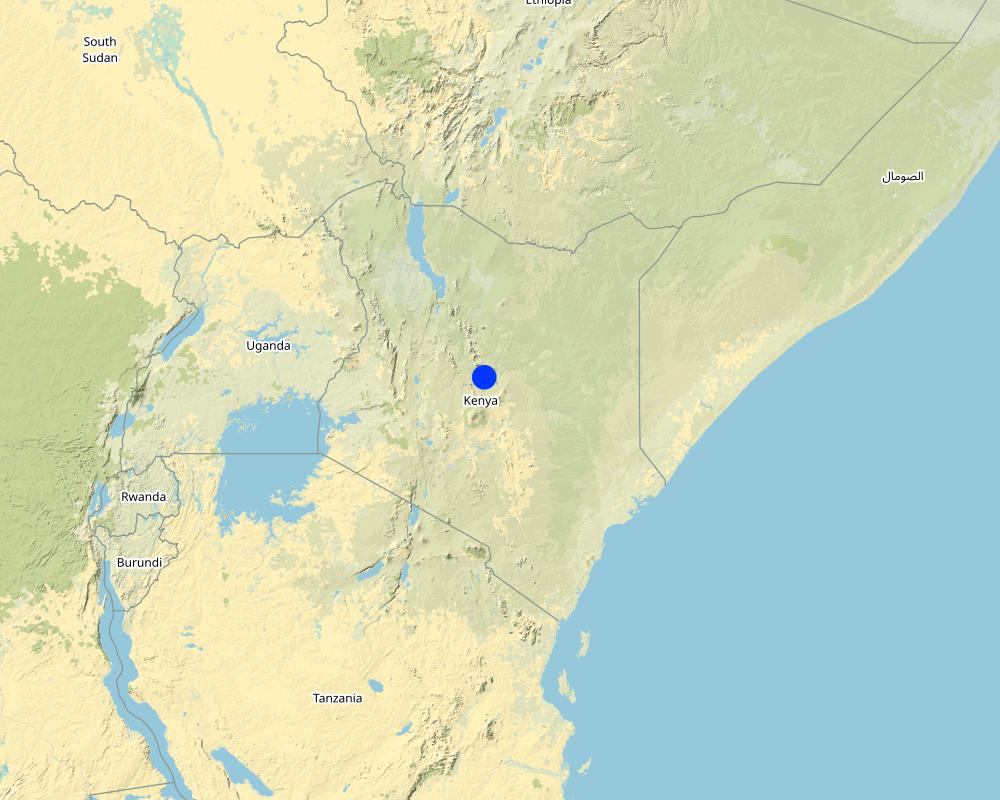Holistic Rangeland Management combined with high end tourism [肯尼亚]
- 创建:
- 更新:
- 编制者: Harry Wells
- 编辑者: –
- 审查者: Donia Mühlematter, Rima Mekdaschi Studer, Simone Verzandvoort, Hanspeter Liniger, Joana Eichenberger
"Ramat engop"
approaches_3399 - 肯尼亚
- Holistic Rangeland Management combined with high end tourism: Nov. 2, 2021 (public)
- Holistic Rangeland Management combined with high end tourism: Aug. 10, 2018 (inactive)
- Holistic Rangeland Management combined with high end tourism: Oct. 22, 2018 (inactive)
- Holistic Rangeland Management combined with high end tourism: Sept. 3, 2018 (inactive)
- Holistic Rangeland Management combined with high end tourism: May 6, 2018 (inactive)
查看章节
全部展开 全部收起1. 一般信息
1.2 参与方法评估和文件编制的资源人员和机构的联系方式
关键资源人员
土地使用者:
有助于对方法进行记录/评估的项目名称(如相关)
Book project: Guidelines to Rangeland Management in Sub-Saharan Africa (Rangeland Management)1.3 关于使用通过WOCAT记录的数据的条件
(现场)数据是什么时候汇编的?:
11/02/2018
编制者和关键资源人员接受有关使用通过WOCAT记录数据的条件。:
是
2. SLM方法的描述
2.1 该方法的简要说明
The establishment of a community wildlife conservancy facilitates (1) 'holistic rangeland management' refering to a to the implementation of a suite of management practices aimed at sustaining and/or improving rangeland productivity such as 'bunched grazing' (livestock concentrated for short duration intensive grazing), short-term 'bomas' (livestock corrals occupied for ~7 days), clearing invasive species and reseeding with grass to assist land rehabilitation/restoration; and (2) High end tourism and monetary donations facilitated by the Northern Rangelands Trust provide funding for the implementation of improved grazing practices and additional income for the community and the reduction of livestock grazing pressure.
2.2 该方法的详细说明
该方法的详细说明:
Kalama Community Wildlife Conservancy has been established with a hierarchical structure led by a board of 13 members (5 female, 8 male), one representing each of the 13 'zones' of the Conservancy. There are also three subcommittees for grazing, finances and tourism. The main aims are to improve the involvement of the community members in the overall management of the conservancy, the generation of additional income from high end tourism and wildlife conservation and the investment into improved land management. The main sources of funding are revenue from contracted high end tourism operation and donations (facilitated by Northern Rangelands Trust). The approximate breakdown of the funding sources is: Tourism including selling of handicrafts (60%), Donors (25%), County Government (5%), Livestock Trading (5%), Camping (5%). Improved livelihood and ownership in the management as well as shared responsibility and benefits are key incentives for the community members.
Within the conservancy an attractive site on a hill overlooking the plains has been leased to an investor for the establishment of an exclusive tourist lodge on the principle of “invest, operate and transfer”, where the investor builds the infrastructure operates is for an agreed period and then transfers it to the community. Further several comping grounds are available for lower budget tourists. The conservancy profits from the neighbouring Samburu Game Reserves. This provides regular income from the lease of the land the entrance fees into the conservancy, employment opportunities for conservancy members (for catering, kitchen, house cleaning, rangers providing security for tourists and protection for wildlife as well as guides for safaris and for entertainment) and a market for selling handicrafts and souvenirs. Another cornerstone is their relationships with two trusts (Northern Rangeland Trust and the Grevy’s Zebra Trust). They have been supportive in the implementation of several holistic rangeland management practices, which include 'bunched grazing' (livestock concentrated for short duration intensive grazing), short-term 'bomas' (livestock corrals occupied for ~7 days), clearing invasive species and reseeding with grass to assist land rehabilitation/restoration. The main aims are to maintain and/or improve rangeland productivity. Regarding methods, 'bunched grazing' is implemented by a team of herders ensuring the livestock are in a tight herd. Short-term 'bomas' are established on bare ground in the traditional manor (i.e. laying cut thorny woody vegetation on the ground to encircle livestock and help protect them from depredation during the night). Invasive woody vegetation can be used to erect these 'bomas'. Invasive species (predominantly Acacia reficiens) is cleared by hand using machetes during the dry season; branches cut ~1 m above the ground to prevent regrowth. Cut branches are laid on the bare ground beneath and seeds of Cenchrus ciliaris hand-broadcasted prior to the onset of rains. Members of the Kalama Community Wildlife Conservancy carry out these activities, both paid (clearing invasive species and reseeding) and unpaid ('bunched grazing' and short-term 'bomas'). Land users and tourists enjoy and value the benefits of increased forage availability in areas successfully rehabilitated but are dissatisfied with the limited extent of the rangeland improvement.
2.3 该方法的照片
2.5 采用该方法的国家/地区/地点
国家:
肯尼亚
区域/州/省:
Samburu County
有关地点的进一步说明:
North of Archers Post Bordering Samburu Game Reserve
Map
×2.6 该方法的开始和终止日期
注明开始年份:
2006
若不知道准确的年份,请注明该方法的大致开始日期。:
10-50年前
2.7 方法的类型
- 基于项目/方案
2.8 该方法的主要目的/目标
The main objectives of the approach are to maintain and/or improve rangeland productivity.
2.9 推动或妨碍实施本办法所适用的技术的条件
社会/文化/宗教规范和价值观
- 启动
Established traditional practice of erecting 'bomas', particularly using less valuable woody vegetation, facilitates implementation of short-term 'bomas' that only require a change in duration of occupancy.
- 阻碍
Traditional practices of herding one's own immediate family's livestock in separate herds deters land users from agreeing to combine herds into larger groups for 'bunched grazing' (also due to associated issues of disease transmission). Furthermore, lack of observation and enforcement of local grazing rules prevents necessary resting of grazing land.
财务资源和服务的可用性/可得性
- 启动
Supplementary income can lead to investment in activities unrelated to livestock husbandry (e.g. setting up small businesses or educating children) rather than increasing heard size, which may prevent further increases in pressure on the rangeland.
- 阻碍
Supplementary income often leads to the purchasing of more livestock, which further increases pressure on the rangeland.
参与者的的协作/协调
- 启动
Clearing of invasive species and reseeding with grass undertaken by land users from all villages/zones of the Kalama Community Wildlife Conservancy.
- 阻碍
Individual concerns are at odds with that of the wider community, leading to opportunistic breaking of grazing rules and deterioration of communally managed rangeland.
法律框架(土地使用权、土地和水使用权)
- 启动
To some extent provides sense of ownership over the land, which may motivate involvement in sustainable land management practices.
- 阻碍
Tenure of of the land is communal but livestock ownership is individual or at the level of immediate families, which creates tensions and conflicts regarding sustainable land management.
土地治理(决策、实施和执行)
- 启动
Community-elected board (representative of the 13 villages/zones) and grazing committee together enable formalisation of grazing rules into by-laws.
- 阻碍
Grazing rules and by-laws not well implemented or adhered to.
了解SLM,获得技术支持
- 启动
Access to technical support from NGOs such as the Northern Rangelands Trust and Grevy's Zebra Trust.
- 阻碍
Lack of knowledge about SLM has lead to unsuccessful grassland rehabilitation efforts.
市场(购买投入,销售产品)和价格
- 启动
Located close to livestock market in the local town, Archer's Post.
- 阻碍
Limited direct access to markets further afield (e.g. Nairobi or international markets), with better prices.
工作量、人力资源可用性
- 启动
Casual labour easily found within the community.
- 阻碍
Large areas of land awaiting rehabilitation, which would require large amounts of labour.
3. 相关利益相关者的参与和角色
3.1 该方法涉及的利益相关者及其职责
- 当地土地使用者/当地社区
Local land users selected from villages/zones within the community of the conservancy.
Providing livestock for joint herding and boma-ing and providing labour for restoration activities (e.g. clearing invasive species and reseeding with grass). Provide services for the running of the wildlife conservancy and tourist activities.
- SLM专家/农业顾问
Advisors from the two trusts: Northern Rangeland Trust and Grevy's Zebra Trust for the support in the design and the implementation of the improved rangeland management practices.
Providing technical knowhow and sharing experiences with other rangeland users where the practices have been applied.
- 研究人员
Master students from the universities in Kenya
Investigating into the state of the rangelands and monitoring changes
- NGO
Northern Rangelands Trust and Grevy's Zebra Trust
Provided funds for learning visits to a ranch implementing 'Holistic Rangeland Management' in Zimbabwe and costs of implementation in Kalama Community Wildlife Conservancy. Also provided technical support.
- 地方政府
County government employees related to tourism and management of Samburu Game Reserve
Making agreements for the use and sharing of income from tourism
- 国际组织
Northern Rangeland Trust: Grevy's Zebra Trust
Joint planning of land management across the boundaries of the Community Wildlife Conservancy. Agreement for movement across boundaries and sharing of common resources
如果涉及多个利益相关者,请注明领导机构:
Kalama Wildlife Community Conservancy
3.2 当地土地使用者/当地社区参与该方法的不同阶段
| 当地土地使用者/当地社区的参与 | 指定参与人员并描述活动 | |
|---|---|---|
| 启动/动机 | 互动 | Using their experience setting up other community conservancies in Kenya, the Northern Rangelands Trust was able to assist in defining the organisational structure of Kalama Conservancy. However, conservancies are not set up without the interest of the community in question. |
| 计划 | 互动 | Kalama Conservancy's board, which plans the Holistic Rangeland Management activities, is composed of members of Kalama Conservancy and those elected by the members of the conservancy. The Northern Rangelands Trust, in particular, helps to plan activities. For example, the Northern Rangelands Trust raised funds to enable members of Kalama Conservancy to visit a ranch in Zimbabwe where Holistic Rangeland Management activities are practiced. |
| 实施 | 互动 | Members of Kalama Conservancy carry out the Holistic Rangeland Management activities. However, 25% of the costs are covered by donations and training related to specific activities is provided by Northern Rangelands Trust and Grevy's Zebra Trust. |
| 监测/评估 | 互动 | The Northern Rangelands Trust commissioned a baseline survey of rangeland health in Kalama Conservancy, which was conducted in 2013. However, the Rangeland Coordinator, Benson Lelukai, was also trained by Northern Rangelands Trust to conduct informal rangeland health monitoring. As yet, no reports are available documenting the success or otherwise of the approach. |
3.4 有关SLM技术选择的决策
具体说明谁有权决定选择要实施的技术:
- 主要是SLM专家,咨询土地使用者之后
解释:
The Holistic Rangeland Management activities are closely modeled on those advocated by the Savory Institute. The Northern Rangelands Trust facilitated the introduction of the practices (e.g. bunched grazing and more frequently moved livestock corrals), which were implemented following consultation with Kalama Conservancy's members.
明确做出决策的依据:
- 个人经验和意见(无记录)
4. 技术支持、能力建设和知识管理
4.1 能力建设/培训
是否为土地使用者/其他利益相关者提供培训?:
是
明确受训人员:
- 土地使用者
培训形式:
- 公开会议
4.2 咨询服务
土地使用者有权使用咨询服务吗?:
是
- personal communication
说明/注释:
The community work closely with Northern Rangelands Trust, which can provide advice.
4.3 机构强化(组织发展)
是否通过这种方法建立或加强了机构?:
- 是,适度
具体说明机构的强化或建立程度:
- 本地
说明机构、角色和职责、成员等。:
Establishment of board and grazing committee facilitate conservancy-level decisions.
具体说明支持类型:
- 财务
- 能力建设/培训
提供进一步细节:
Northern Rangelands Trust provide financial assistance (USAID funding) and training together with Grevy's Zebra Trust (FAO funding).
4.4 监测和评估
监测和评估是该方法的一部分吗?:
是
注释:
But, so far, monitoring is informal and available documentation reporting outcomes of the approach is limited.
若是,该文件是否用于监测和评估?:
否
4.5 研究
研究是该方法的一部分吗?
否
5. 融资和外部物质支持
5.1 该方法中SLM组成部分的年度预算
说明该方法中SLM部分的年度预算,单位为美元:
24447.00
如果不知道准确的年度预算,请给出一个范围:
- 10,000-100,000
注释(例如主要的资助来源/主要捐助者):
Main sources of funding are revenue from contracted high end tourism operation and donations (facilitated by Northern Rangelands Trust). Rough breakdown: Tourism including selling of handicrafts (60%), Donors (25%), County Government (5%), Livestock Trading (5%), Camping (5%).
5.2 为土地使用者提供财政/物质支援
土地使用者是否获得实施该技术的财政/物质支持?:
是
如果是,请具体说明支持的类型、条件和提供者:
Financial support provided to cover costs associated with activities (e.g. labour, logistics).
5.3 对特定投入的补贴(包括劳动力)
- 劳动力
| 程度如何 | 对补贴做出具体说明 |
|---|---|
| 充分融资 |
- 其它
| 其它(具体说明) | 程度如何 | 对补贴做出具体说明 |
|---|---|---|
| logistics (fuel) | 充分融资 |
如果土地使用者的劳动力是一项重要的投入,那么是不是:
- 以现金支付
5.4 信用
是否根据SLM活动的方法给予信用值?:
否
5.5 其它激励或手段
是否有其他激励措施或工具用于促进SLM技术的实施?:
否
6. 影响分析和结论性陈述
6.1 方法的影响
该方法是否有助于当地土地使用者,提高利益相关者的参与度?:
- 否
- 是,很少
- 是,中等
- 是,支持力度很大
Restoration efforts hired labour from all zones of the conservancy.
这种方法是否有助于基于证据的决策?:
- 否
- 是,很少
- 是,中等
- 是,支持力度很大
Some monitoring is conducted but informal and not comprehensive.
该方法是否帮助土地使用者实施和维护SLM技术?:
- 否
- 是,很少
- 是,中等
- 是,支持力度很大
The organizational structure of the conservancy provided a framework for inter-village coordination with respect to SLM.
该方法是否提高了SLM的协调性和成本效益?:
- 否
- 是,很少
- 是,中等
- 是,支持力度很大
The organizational structure of the conservancy provided a framework for inter-village coordination with respect to SLM.
该方法是否调动/改善了使用财务资源实施SLM的途径?:
- 否
- 是,很少
- 是,中等
- 是,支持力度很大
Substantial income from tourism allowed investment into improved rangeland management.
该方法是否提高了土地使用者实施土地管理的知识和能力?:
- 否
- 是,很少
- 是,中等
- 是,支持力度很大
Training provided by the conservancy's institutional partners (NRT and GZT) contributed to developing SLM capacity.
该方法是否提高了其他利益相关者的知识和能力?:
- 否
- 是,很少
- 是,中等
- 是,支持力度很大
Learning visits to rangeland restoration sites invited members of other communities around the country to be exposed to restoration practices and their impacts.
该方法是否建立/加强了机构、利益相关者之间的合作?:
- 否
- 是,很少
- 是,中等
- 是,支持力度很大
The organizational structure of the conservancy provided a framework for inter-village collaboration.
该方法是否缓解了冲突?:
- 否
- 是,很少
- 是,中等
- 是,支持力度很大
Job creation mitigated conflicts, particularly the jobs made available to young warrior class individuals (e.g. motorbike driver), who would otherwise be arming themselves and rustling livestock.
该方法是否有助于社会和经济弱势群体?:
- 否
- 是,很少
- 是,中等
- 是,支持力度很大
No particular measures to benefit socially disadvantaged groups was mentioned.
该方法是否改善了性别平等并赋予女性权力?:
- 否
- 是,很少
- 是,中等
- 是,支持力度很大
Bead-work markets facilitated by NRT created income opportunities for women.
该方法是否鼓励年轻人/下一代土地使用者参与SLM?:
- 否
- 是,很少
- 是,中等
- 是,支持力度很大
Young people were also involved in the rangeland restoration efforts.
该方法是否改善了阻碍SLM技术实施的土地使用权/用户权问题?:
- 否
- 是,很少
- 是,中等
- 是,支持力度很大
The conservancy structure provides land tenure security and increases the motivation to practice SLM.
该方法是否改善了粮食安全/改善了营养?:
- 否
- 是,很少
- 是,中等
- 是,支持力度很大
The increased income through tourism and donor funding may have led to improved food security/nutrition, but difficult to judge.
该方法是否改善了市场准入?:
- 否
- 是,很少
- 是,中等
- 是,支持力度很大
NRT create a market for their livestock by buying and selling to ranchers for fattening programmes.
该方法是否改善了供水和卫生条件?:
- 否
- 是,很少
- 是,中等
- 是,支持力度很大
Donor funding enabled the establishment of a clinic, which has greatly increased access to health care.
该方法是否带来了更可持续的能源使用?:
- 否
- 是,很少
- 是,中等
- 是,支持力度很大
No reported change in energy sources.
该方法是否提高了土地使用者适应气候变化/极端情况和减轻气候相关灾害的能力?:
- 否
- 是,很少
- 是,中等
- 是,支持力度很大
Over such a short period, this is difficult to make any statements about.
该方法是否会带来就业、收入机会?:
- 否
- 是,很少
- 是,中等
- 是,支持力度很大
The conservancy structure creates jobs such as: managerial, committee membership, accounting, security, temporary labour.
6.2 土地使用者实施SLM的主要动机
- 增加生产
- 减少土地退化
- 支付/补贴
Initial costs for the establishment of the practices (e.g. cutting of invasive species are fully covered through income and resources from tourism and support from the trusts
- 美学改进
attractive landscape less degraded and monotonous due to one invasive species
- Improved attractiveness for tourism and fooder for wildlife ???
6.3 方法活动的可持续性
土地使用者能否维持通过该方法实施的措施(无外部支持的情况下)?:
- 不确定
若否或不确定,请具体说明并予以注释:
Lack of funding prevents larger areas from being rehabilitated through clearing of invasive species and reseeding with grass. Moreover, inability to control grazing pressure to give adequate rest to rehabilitating areas has led to unsuccessful restoration efforts. However, restoration efforts may gradually become voluntary in the future and land users may be incentivised to adhere to local grazing rules.
6.4 该方法的长处/优点
| 土地使用者眼中的长处/优势/机会 |
|---|
| Land previously considered unproductive is now considered grazing land. |
| Increased infiltration, reduced run-off and soil erosion. |
| Regeneration of the grassland in the 'core conservation area' (a central area with minimised grazing pressure demarcated for tourism) attracts wildlife, which in turn benefits tourism. |
| 编制者或其他关键资源人员认为的长处/优势/机会 |
|---|
| Where implemented, restoration activities and reduced grazing pressure have increased productivity and diversity or grasses and forbs for livestock and wildlife forage. |
| Takes advantage of inherent capacity of the land to recover. |
| Improved attractiveness for tourism |
6.5 该方法的弱点/缺点以及克服它们的方法
| 土地使用者认为的弱点/缺点/风险 | 如何克服它们? |
|---|---|
| The expectation from the community regarding the tourism-related jobs and income are too high. | Raising awareness about the limitations of benefits from tourism. |
| Increased pressure on 'Core Area' due to higher grass/forage production. | Strictly enforce local by-laws that restrict grazing in the 'Core Area'. |
| Rangers under-equipped and lack sufficient capacity. | Source more equipment and provide training/capacity building for rangers. |
| 编制者或其他关键资源人员认为的弱点/缺点/风险 | 如何克服它们? |
|---|---|
| Very few land users are implementing the practices (e.g. short-term 'bomas' and 'bunched grazing'). | Although likely unfeasible, one possible solution might be for the community to manage the livestock communally and share the produce rather than individual ownership, which creates conflicts in motivation between the individual and the wider community. |
| Paying community members to undertake restoration activities has limited the area rehabilitated to date and led to a reliance on donor funding for land restoration. This may also be eroding the community's social capital by placing a monetary value on land health and thus devaluing it and replacing the inherent sense of value of land health that may have existed previously. | Encouraging voluntary participation in restoration activities may not only increase the area rehabilitated but also improve long-term maintenance through cultivating a sense of ownership. |
| Lack of adherence to and enforcement of grazing rules limits the success of sustainable land management efforts. | Strictly enforce local grazing rules and by-laws. |
7. 参考和链接
7.1 方法/信息来源
- 实地考察、实地调查
2 field visits.
- 与土地使用者的访谈
3 informants (Manager, Rangeland Coordinator and Chair of Grazing Committee).
- 与SLM专业人员/专家的访谈
2 informants (Northern Rangelands Trust and Grevy's Zebra Trust employees)
- 根据报告和其他现有文档进行编译
1 report, 1 technical guideline document, and 1 poster.
7.2 参考可用出版物
标题、作者、年份、ISBN:
Northern Rangeland Trust: Baseline assessment of rangeland health - Kalama and Namunyak conservancies, Leigh A. Winowiecki & Tor-G. Vågen2014
可以从哪里获得?成本如何?
Available online at no cost.
7.3 链接到网络上可用的相关信息
标题/说明:
Northern Rangeland Trust: Baseline assessment of rangeland health - Kalama and Namunyak conservancies
URL:
https://cgspace.cgiar.org/bitstream/handle/10568/65671/nrtReport_march2014.pdf?sequence=1
链接和模块
全部展开 全部收起链接
无链接
模块
无模块






